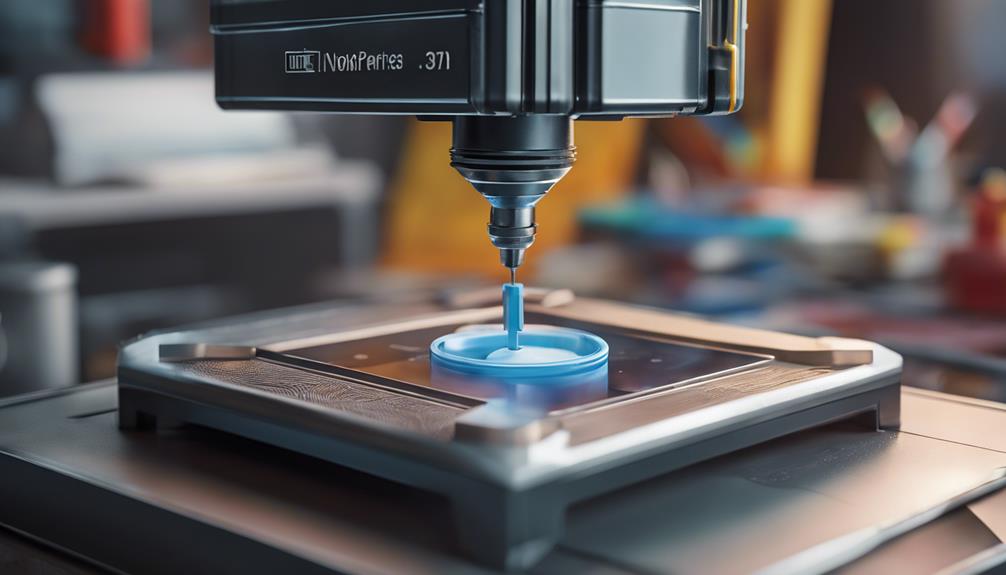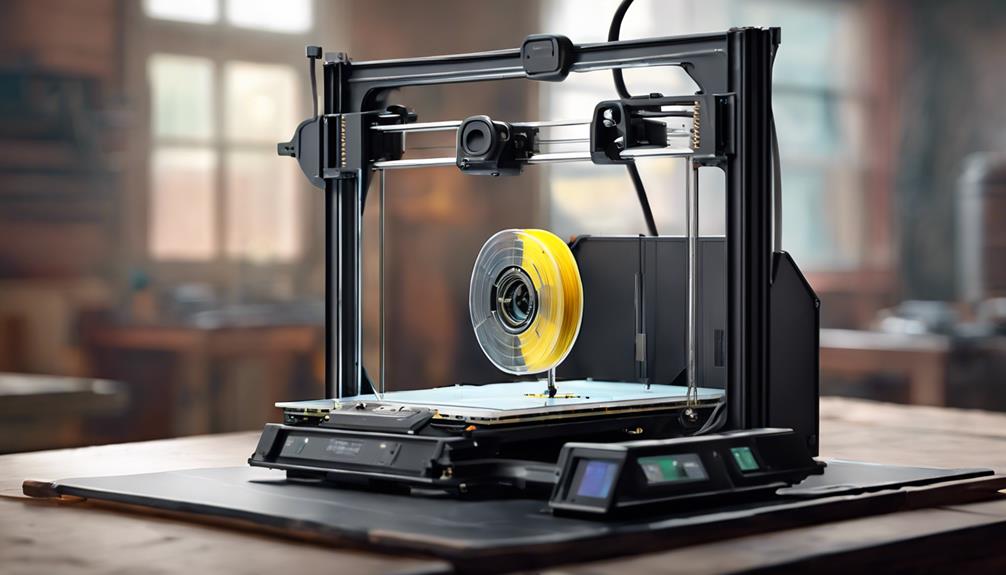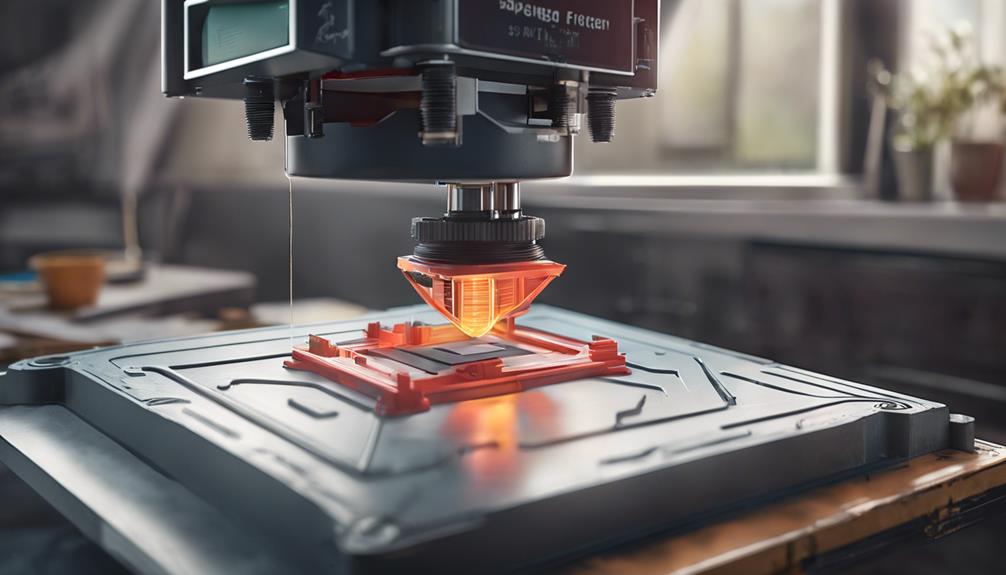To enhance your 3D printer's home position precision, recalibrate regularly for accurate results. Consider the impact of these adjustments on your printing quality.
Understanding Home Position Precision

When recalibrating your 3D printer's home position, guaranteeing the precision required is essential for achieving accurate prints. The home position serves as the reference point for all your printing endeavors. Even the tiniest misalignment can lead to flaws in your prints.
To maintain precision, make certain that the printer's nozzle is at the exact starting position on the build plate. Check for consistency in the distance between the nozzle and the build plate, as this directly affects the quality of your prints. Align the toolhead with the end stops and build plate edges meticulously to guarantee accurate positioning.
Updating Printer Firmware for Precision
To guarantee the precision of your 3D printer's home position, updating the firmware is crucial for achieving accurate prints. Start by identifying your printer's firmware; common ones like Marlin are used by various manufacturers.
Download the latest firmware version for your specific printer model. Connect your 3D printer to the computer via USB and upload the firmware using Cura or a similar slicer. Verify the successful installation by checking the firmware version displayed.
Updating the firmware guarantees that your printer operates with the latest improvements, bug fixes, and optimizations, helping to maintain the accuracy of the home position and overall print quality.
Customizing Marlin Firmware for Accuracy

For achieving precise calibration of your 3D printer's home position, consider customizing the Marlin firmware to enhance accuracy and performance.
Download the Marlin firmware source code and modify the configuration to adjust travel limits and endstop positions. Use the Arduino IDE to compile the customized firmware.
Guarantee compatibility with your specific printer model to avoid potential issues. Troubleshoot any compatibility problems that may arise during the customization process.
By customizing the Marlin firmware, you can tailor the settings to meet the exact requirements of your printer, leading to improved accuracy in determining the home position.
Take the necessary steps to fine-tune the firmware for peak performance and precision in your 3D printing projects.
Maintenance Tips for Home Position Precision
Maintain your 3D printer's home position remains precise with these essential maintenance tips.
- Check for Debris: Regularly clean the build plate and endstops to prevent particles from affecting the home position accuracy.
- Secure Hardware: Guarantee all screws and belts are properly tightened to prevent any shifts that could impact the home position.
- Monitor Power Supply: Use a stable power source and consider a UPS (Uninterruptible Power Supply) to prevent power fluctuations that can cause home position drift.
Verifying Precision of Home Position

Confirm the accuracy of your 3D printer's home position by verifying it through practical tests and checks. To guarantee precision, conduct a bed leveling routine and print a rectangle matching the build plate dimensions.
Create custom G-Code to move the toolhead to the home position and check its alignment with end stops and build plate edges. Consistency in the distance between the nozzle and the build plate is vital.
This verification process helps in detecting any deviations in the home position setup. By routinely verifying the precision of your home position, you can maintain the quality and accuracy of your 3D prints, leading to better overall results.
Frequently Asked Questions
How Can I Troubleshoot Sudden Shifts in X or Y Axis During Printing?
To troubleshoot sudden shifts in X or Y axis during printing, verify firmware and power stability. Check for mechanical issues like loose belts. Recalibrate home position and guarantee proper alignment with bed edges for consistent prints.
What Backup Measures Can Be Implemented to Prevent Home Position Loss?
To prevent home position loss, back up critical settings regularly. Keep spare parts, like endstops, handy for quick replacements. Implement UPS for power stability. Conduct periodic maintenance checks for mechanical issues.
Is There a Way to Ensure Stable Power Supply for Home Position Accuracy?
To guarantee stable power supply for home position accuracy, use a reliable surge protector or UPS. These devices safeguard against power fluctuations that can disrupt your 3D printer's home position calibration, ensuring consistent and precise printing results.
How Do I Address Firmware Glitches Causing Home Position Inaccuracies?
To address firmware glitches causing home position inaccuracies, access the firmware settings, recalibrate them to match physical modifications, and reupload the adjusted firmware. Verify the changes by checking the firmware version for successful recalibration.
Can Mechanical Issues Lead to Home Position Drift and How to Fix Them?
Mechanical issues like loose belts or misaligned rods can cause home position drift. Tighten belts, align rods, and check for loose parts. Regular maintenance prevents drift. Keep a stable power supply to avoid further issues.
Conclusion
Now that you've recalibrated your 3D printer's home position and updated the firmware, you're all set for precise and accurate prints.
By customizing the settings and maintaining the printer regularly, you can guarantee that your prints turn out perfectly every time.
Remember to double-check the precision by performing bed leveling routines and custom G-Code checks to assure consistent quality.
Keep up the great work, and happy printing!